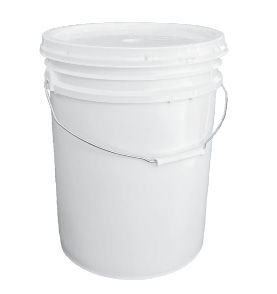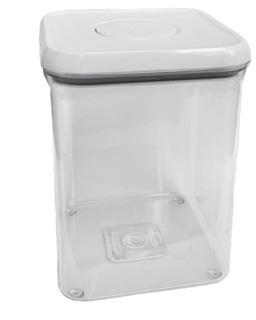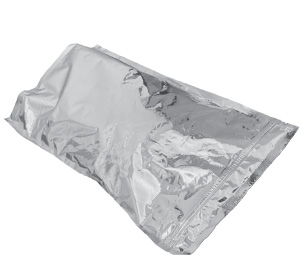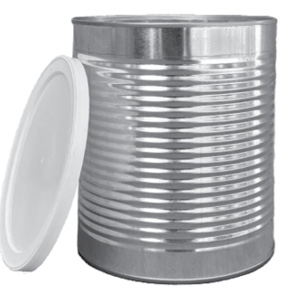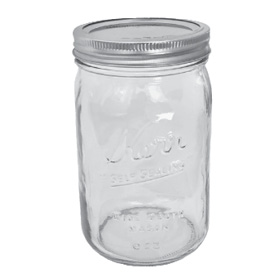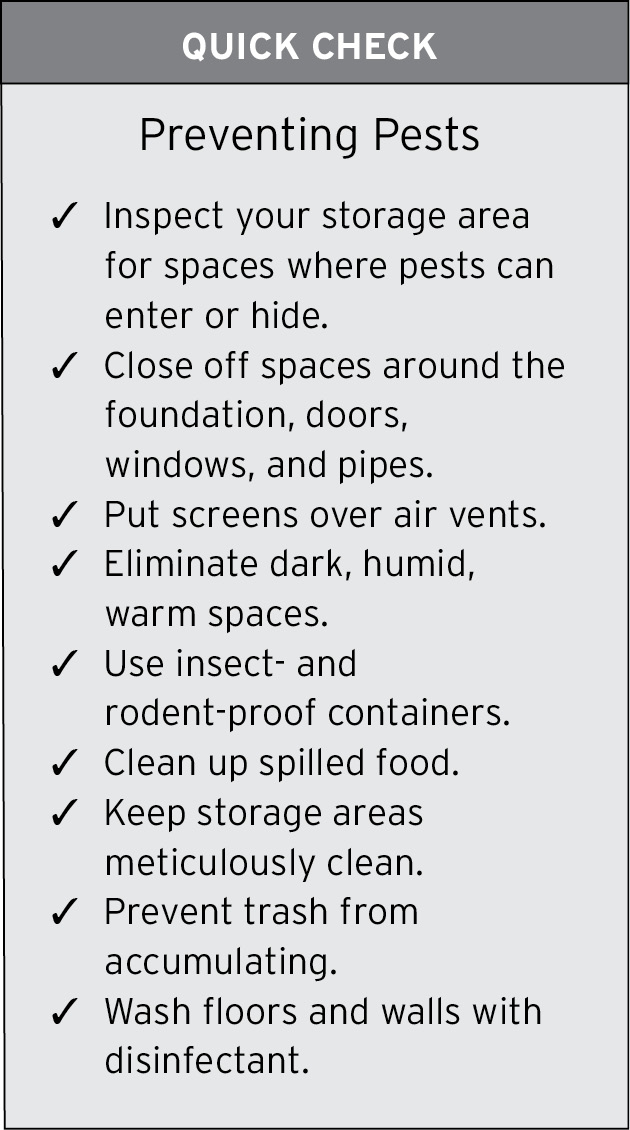
Food Storage Conditions and Containers
Five Things You Can Do Now
- Dejunk, clean, and organize to make room for food storage.
- Purchase or build shelves for food storage.
- Purchase several storage containers and a bucket wrench.
- Calculate how many square feet you will need for the 7-Plus Basic Plan for your family.
- Install dowels or strips of wood on shelves to contain canned goods during an earthquake
When it comes time to use your food storage, you want it to be usable. How and where foods are stored greatly affects shelf life. Although deterioration cannot be stopped entirely, proper packaging and storage conditions can minimize it.
Factors in the Food Storage Environment
The ideal storage location is cool, dry, dark, and clean. The best containers maintain an oxygen-free environment and keep out insects and rodents. Each environmental factor not only has its own effect, but when combined with other factors, the rate of deterioration is multiplied. Refer to table 12.1 for a summary of how to create an optimal storage environment.
Heat
To assure quality in stored food, maintain a temperature of less than 70° F.
Heat is a powerful destroyer of food quality. The rate of a simple chemical reaction roughly doubles with each 18° F (10° C) rise in temperature. Because of their biochemical and enzymatic nature, reactions in food may increase at a greater rate. These reactions affect the color, flavor, texture, and nutritional value of food. Heat increases the growth rate of both microbes and insects. And while it can dry out certain foods, it can also generate moisture inside containers, increasing microbial activity.
Moisture
A certain amount of moisture is necessary to maintain quality in most foods, but too much moisture—above about 10 percent—promotes the growth of yeasts, molds, bacteria, and insects. It also increases nonenzymatic browning and the breakdown of fats, provides a medium for chemical reactions, and corrodes containers. Foods properly prepared for long-term storage contain the correct amount of moisture and keep that moisture at a constant level.
Light
Although light inhibits the growth of molds, it is best to shield your storage from both artificial light and sunlight. Ultraviolet light is the primary culprit in damage to flavor and texture. It increases rancidity and destroys vitamins. Highly pigmented foods are especially susceptible to bleaching and discoloration. Shield light-penetrable containers by keeping them in boxes.
Oxygen
Oxidation destroys vitamins, alters pigments, and promotes decomposition. Fruits, vegetables, and foods high in oils and fats are especially susceptible to the negative effects of oxygen. Even small amounts of oxygen will oxidize the fat in nearly all foods and produce rancid flavors and odors.
Oxygen is essential for the growth of fungi‚ yeasts, molds, and microbes. Also, weevils and other insects that contaminate flour and grains require oxygen to live and reproduce. Oxidation is increased by slicing and grinding foods and by the presence of heat and light.
Odors and Dust
Some foods, particularly grains, flour, and milk, absorb odors from the environment and should never be stored near substances with strong odors, such as garlic, onions, soaps, and petroleum-based products, like gasoline, oil, kerosene, paint, paint thinners, and pesticides.
Insects and Rodents
To inhibit insect infestation, maintain a cool, oxygen-free and moisture-free environment. Use durable containers to prevent rodents from damaging food storage.
Food Storage Containers
A good container keeps moisture and flavor in and additional moisture, air, light, dust, foreign odors, insects, and rodents out.
A suitable container will maintain proper moisture and natural food aromas while keeping air, light, dust, foreign odors, insects, and rodents out. Such containers can be made from a variety of materials in different shapes and sizes. Each type of material has its benefits. You’ll likely use different containers for different needs. Food storage containers are not difficult to acquire. Several companies that specialize in food storage containers are listed in the resource section. Table 12.2 compares the advantages and disadvantages of common storage containers.
Polyethylene HDPE Buckets
Rigid, high-density polyethylene (HDPE) food-grade plastic buckets, often called poly buckets, are practical for long-term storage. Always select food-grade plastic containers that are BPA and phthalate free. Look for an SPI resin identification code of 1, 2, 4, or 5 stamped on them.
Round buckets come in 5-, 6-, and 6.5-gallon sizes, ideally with wire handles. Square poly buckets come in 2- and 4-gallon sizes and can be stacked to use space more efficiently.
You can get used buckets from sources such as bakeries, school cafeterias, restaurants, and ice cream stores, but make sure they are FDA-approved, have contained only foods, are in useable condition, and are thoroughly cleaned and dried before use.
Bucket Lids
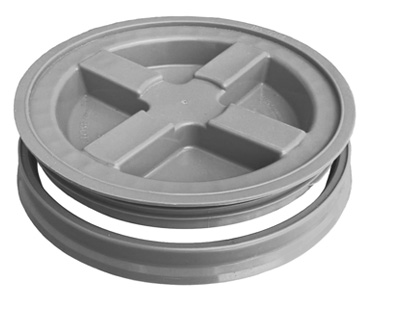
Lids for round buckets come in either snap-on or screw-on styles. Look for snap-on lids that have gaskets for a tight seal. The screw-on gamma lid pictured has two-parts—a ring with a gasket that fits over a 12" bucket, and a twist top that screws onto it to form an airtight seal. This is especially useful if you plan to open and close the container often. These lids are available in several colors, which makes it nice for organizing your storage by color.
Bucket-Lid Wrench
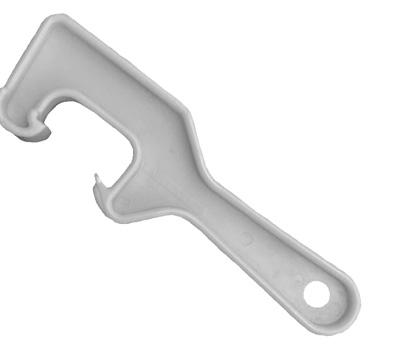
A bucket-lid wrench makes for easy opening, and a rubber mallet is handy for securing snap-on lids to ensure an airtight fit.
Polyester Foil (Mylar) Bags
Polyester foil storage bags, commonly known by the trade name Mylar, are made from layers of polyester, plastic, and foil. Mylar bags, when used with oxygen absorbers, significantly increase shelf life for long-term food storage because of their moisture- and oxygen-barrier properties.
Bags made from Mylar foil are the top choice for storing many items because they are moisture and oxygen resistant.
However, Mylar bags are susceptible to puncturing. One way to prevent punctures is to use a Mylar bag as a liner in a poly bucket or place several smaller bags in a bucket. A heat sealer is needed to seal Mylar bags. This process is described in chapter 13.
©Patricia Spigarelli-Aston
PETE or PET Plastic Containers
These plastic containers are identified by the #1 inside the triangle usually found on the bottom of the container. PETE containers come in a wide variety of shapes and sizes and can be purchased with lids with gaskets for an airtight seal. PETE containers are also available for free in the form of soda pop and juice bottles, and snack and condiment jars.
Metal Containers
Metal cans are an ideal storage container as they are excellent barriers to air, moisture, and light. They are available in a wide variety of sizes and shapes and are used for both wet- and dry-pack food processing.
Glass Containers
Glass jars are the primary container for home-canned produce and meats. These jars are impermeable to air and moisture but must be kept in a cool, dark place and protected from breaking. Use quart or half-gallon sizes for storing dry bulk food.
Although jars can be moderately expensive, they’re reusable. To save money, purchase them at thrift stores or get them from friends no longer using them. The biggest drawback to jars is that they let in light and break easily, but these two problems can be overcome somewhat by storing the jars in their original cartons. It can also be challenging to seal them properly to keep them airtight for long-term storage.
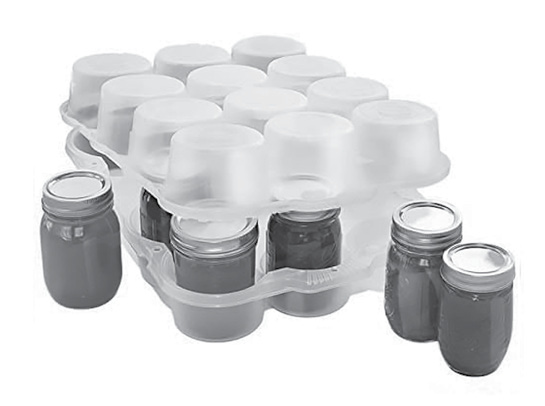
JarBOX
JarBox is a plastic canning-jar caddy that securely holds twelve jars and comes in both pint and quart sizes. It is a nice organizational tool and is especially useful in areas prone to earthquakes.
Determine the Right Size Container
Food begins to deteriorate once its container is opened. Perishable foods, such as canned meats, require refrigeration or need to be used within hours after opening. The ideal sized container will hold no more than is needed for a meal.
The appropriate container size for dehydrated foods is one where the contents will be used up prior to their open shelf life being exceeded. For example, if an item has an open shelf life of three months and you need twenty pounds for one year, the maximum amount per container would be five pounds. Check your list of food items and determine appropriate container sizes for each.
As you can see in table 12.3, smaller containers have quite a few advantages, though large containers are more economical, especially for items not costing much per pound. Wheat, for example, may be purchased in six-gallon poly buckets for about half of what it costs in #10 cans.
Where to Keep Your Food Storage
Food Storage Areas
Your food storage areas should be orderly and readily accessible to accommodate rotation and inventory control. You may also want to spread your storage among several locations to decrease the chance of it being affected all at once by flood, earthquake, theft, or other mishaps.
Ideally, you want two different types of storage areas—a large area with low humidity for storing preserved foods, such as canned and dehydrated foods, grains, legumes, milk, sugar, salt, etc.; and another area with high humidity for storing fresh produce (see chapter 28).
How Much Space?
The amount of space needed depends on how many people you are storing for, how long you are storing for, and the types of food you are storing. This book’s 7-Plus Basic Plan (see chapter 16) and similar plans take about fifteen cubic feet per person for a year’s supply—imagine a space three feet wide, five feet tall, and one foot deep. The Advanced Plan (see chapter 17) requires about thirty cubic feet. It will be less with air-dried fruits and vegetables and more with freeze-dried foods.
Creating Storage Space
Ideally, you’d dedicate a room or pantry to food storage. While finding space in a small home or apartment can be a challenge, with a little creativity and by reexamining how you are using the space you have, you can probably find space. Here are several ways you can make space:
- Store nonfood items in the garage to make space in the home for food storage.
- Take a good look at how you’re using the space you have and rearrange it.
- Dejunk your spaces to make more room for food storage.
- Rearrange how cupboard, pantry, and closet space is used.
- Use the empty spaces behind furniture, on balconies, or under stairways.
- Make furniture, such as bookcases, beds, coffee and end tables, from storage containers.
- Partition a large room with a false wall, room divider, decorator screen, or curtain and use the space for storage.
Remember as you try to find space that food should not be stored at temperatures above 70° F (21° C).
Shelving, Racks, and Bins
You can either buy or build shelves. Most commercial shelves are three feet wide and twelve to eighteen inches deep. Invert shelves to create a lip around the edges. If you build your own, remember to leave two inches of headspace and use vertical supports at least every three feet. A one-inch strip of wood or wire, etc. can be placed at the outer edge for security.
Minimizing Earthquake Damage
During an earthquake, storage items will get thrown around and damaged or destroyed if they are not properly secured. If you live in an earthquake-prone area, you may want to use these simple precautions that can help protect your food storage:
- Use unbreakable containers as often as possible.
- Store glass containers in original cartons and cushion with newspaper or use JarBOX jar-storage containers (see resources).
- Store heavy, large items near the floor to minimize breakage.
- Either do not stack storage, or stabilize the stack against tipping.
- Use sturdy shelving and anchor the top to the wall studs by bolting or tying down securely.
- Enclose cupboards with sliding doors, sturdy latches, or hooks to prevent contents from dumping.
- Install “lips” or guardrails on open shelves with strong cord or wire or nail sturdy dowels a couple of inches above the shelf.
- Install metal shelves upside down to create a small lip.
- Locate storage areas in sturdiest part of the home.
Consider having an outside entrance so you can get to your storage if your home happens to collapse over the storage area.
Pest Control
Cockroaches, silverfish, ants, and rodents ruin billions of dollars of food each year. and contaminate far more than they eat. Although silverfish and ants can be a nuisance if they contaminate food, they are not disease carriers. Cockroaches and rodents, however, are disease carriers. And rats carry more human diseases than any other animal except for mosquitoes. During an extended crisis with poor or nonexistent sanitation and a buildup of refuse, pests can be a major problem. Prepare now to minimize it.
Dealing with Infestations
Should an infestation occur, destroy the contaminated food and clean the shelves. Recommendations of pesticides safe for use around food are constantly changing, so check with your cooperative extension or a reputable pest control company.
